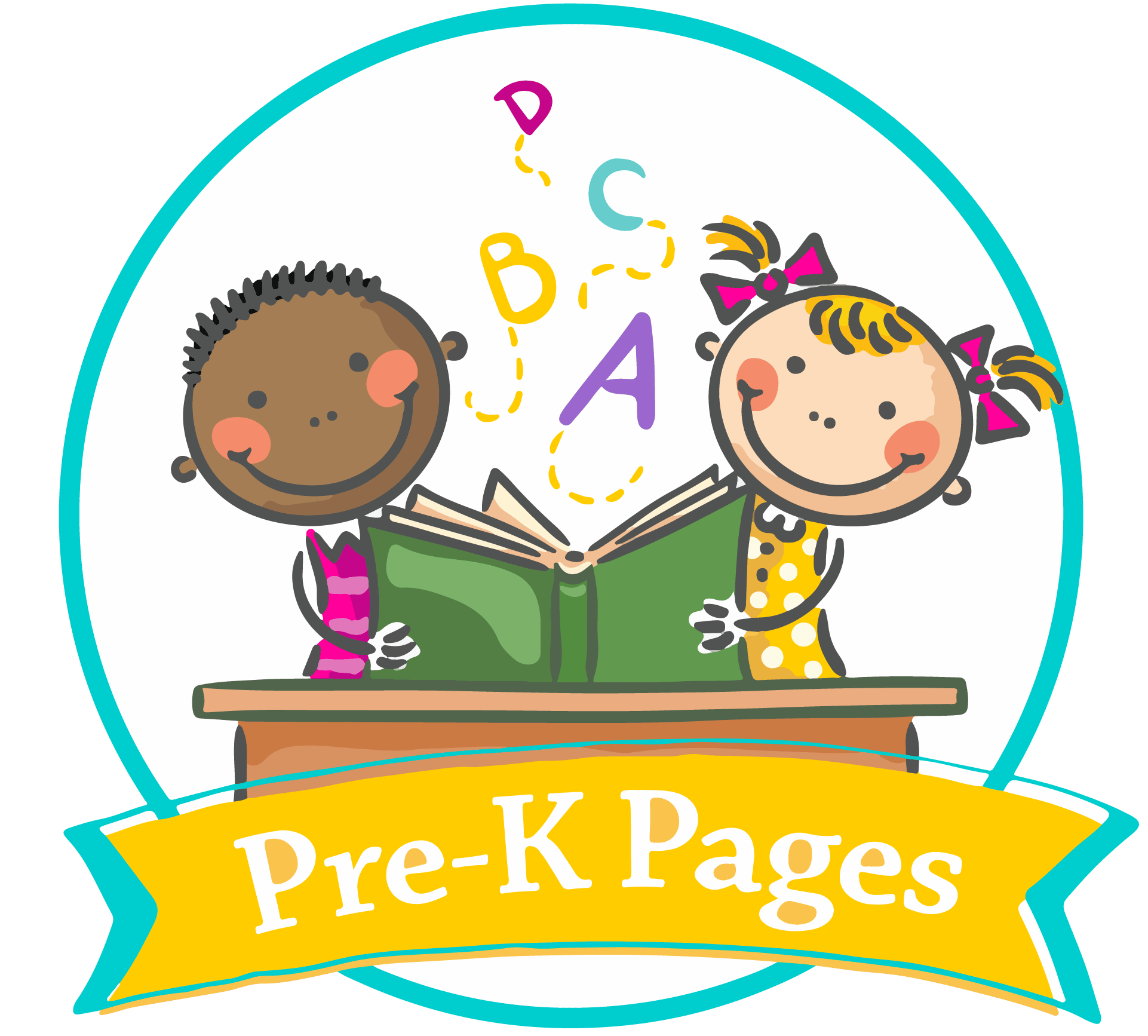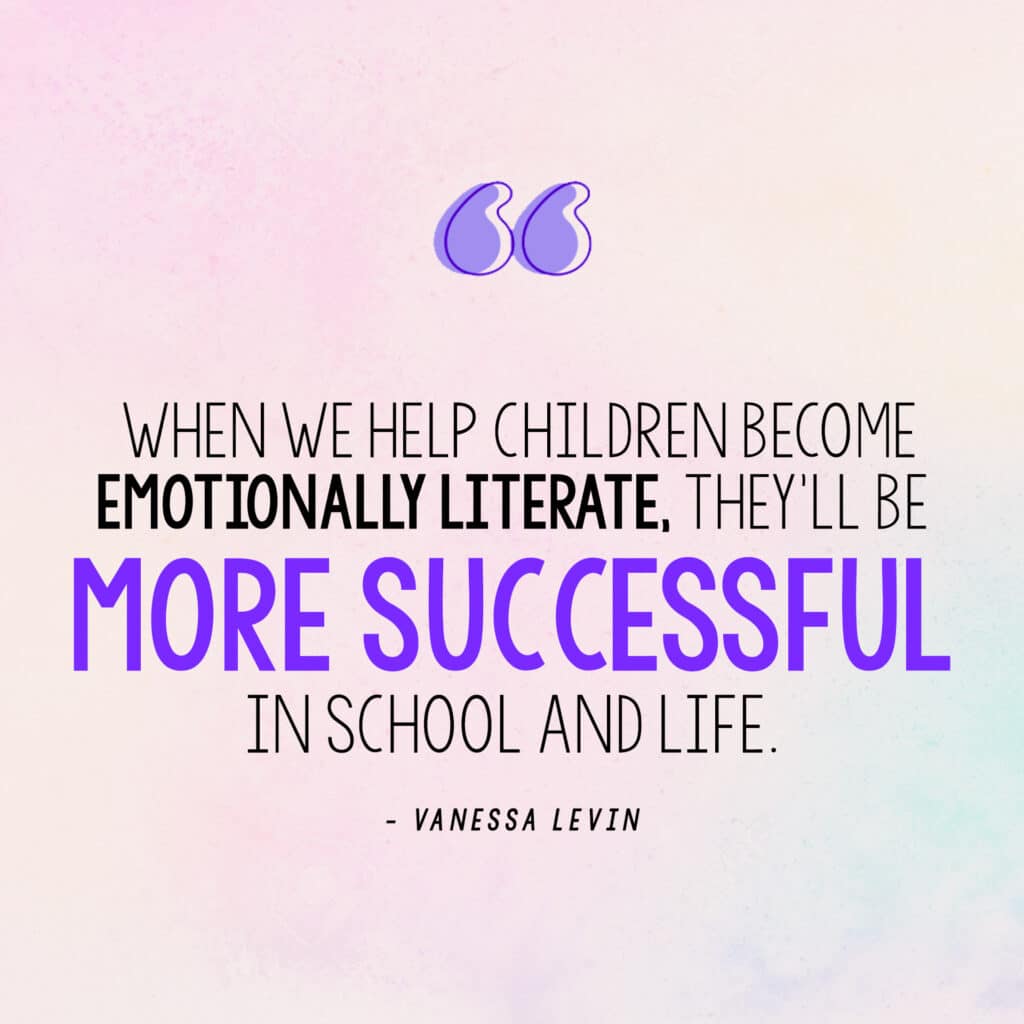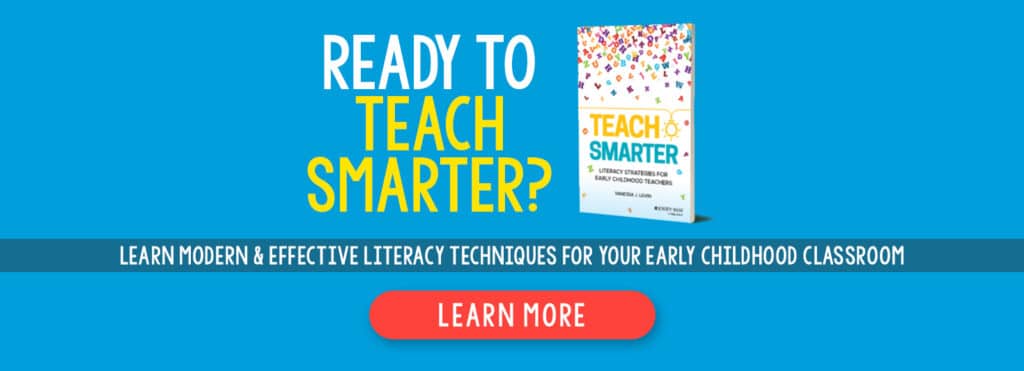In today’s episode of Elevating Early Childhood, I will be discussing something every professional educator needs to use in their classroom: Emotions and feelings activities you can use to teach emotional literacy to your students.
As we all know, social skills are not innate. They’re learned and honed throughout life, and of course, the earlier you start, the more social intelligence and emotional literacy you acquire.
This is why emotions and feelings activities are crucial.
In order to learn social skills, children have to first learn how to name and express their own feelings and emotions.
There are many ways to help them achieve that, and today, I’ll be sharing a few of them with you.
After all, what better way to teach your students about their feelings than through some fun games?
So, without further ado, let’s get to it!
The Importance of Emotional Literacy
If you’re wondering why we’re teaching emotional literacy in preschool, the answer is simple: Research has shown that children who can identify and name their own feelings and emotions (and do the same to others) fare better in life.
Emotional literacy is a skill every child will use through their school life, their work life (as adults), and their personal life.
Twenty-five years from now, when your child has a job and has conflict with a coworker, they’re going to need their emotional literacy skills. If they’re not emotionally literate, they won’t be able to tell how that coworker is feeling. They won’t understand why their colleague is angry with them, and thus, won’t be able to solve the issue peacefully.
Emotional literacy teaches children about the subtle nuances and references they need to keep an eye on in order to understand other people’s internal lives. A person who’s emotionally literate will know how to respond to someone else’s feelings, because they’ll be able to notice those emotions.
The bottom line is that when we help children become emotionally literate, we set them up for future success. It’s a win-win situation for everyone!
So, now that we understand why emotional literacy is so important, let’s dive into the meat of today’s episode: how to teach it to your students.
Tools to Teach Emotional Literacy
One of the things I learned over my many years in the classroom is that before you teach anything to a young child, you first have to identify the precursors. That means teaching them what comes first, before the actual skill you’re trying to teach.
In this case, when it comes to social skills, the precursor you have to teach children is how to identify and name their own feelings and emotions. There are many ways to do this, and here are a few of my favorite ones!
Never Too Young for a Bingo Game
I love to introduce my students to Bingo games very early in the school year. And I mean simple Bingo games, not complicated ones.
There are many educational benefits to Bingo. I know, shocking, right? Yes, I thought the same at first, and yet, here we are. Bingo is a great game that teaches amazing self-regulation skills.
Think about it: Your children will have to sit around with a Bingo card each, and they have to listen, which is a skill in itself. It also teaches them patience and hones their visual skills.
So, how does the Emotions Bingo game work? Here are a few rules (you can learn more about it here):
First of all, make sure to use pictures of real children displaying different emotions. Why is that? Because, as all professional educators know, children are very concrete. They learn from what’s real, not from the abstract.
To teach young kids to identify feelings and emotions in themselves and others, we have to use actual photographs. Once they understand feelings and emotions, we can move on to more abstract types of identification, like emojis.
Something else to keep in mind is that the game is better played in small groups, four to six children maximum. Anymore than that, and it becomes too complicated for both you and the students.
Have Some Fun With the Memory-Matching Game
This game is easy to play. You’ll have a stack of cards, each of them with the picture of a child displaying a different feeling or emotion like scared, happy, sad, angry, etc. …
Take the cards and put them face down on a flat surface and gather the children around (again, playing in smaller groups is better).
Once everyone is ready, the kids will take turns flipping over the cards and trying to find a match. When a child finds a match, they get to keep the cards.
The goal is to keep playing until all the matches have been found!
Start the Day With the Feelings and Emotions Check-in Chart
You may already be familiar with check-in. For those who aren’t, check-in is a way for young children to let you know they’re here at the beginning of the day.
But I’ve also used it to understand how the kids are feeling. Many teachers have told me that this feelings check-in was a real game-changer for them, because you get all the benefits of a morning check-in and of social and emotional learning.
This is how it works: Take the photographs of people showing emotions (like with Emotions Bingo, use photos of real people) and glue them to a chart. Every morning, the children will locate their name when they come into the classroom. After doing so, they’ll put it in the pocket with the emotion they’re feeling that day.
Then, when you have your morning meeting, you can use the chart to talk about feelings and emotions with your students.
Checking in with the children to see how they’re feeling really goes a long way, especially when you’re starting out your day together.
Finishing up With Playdough Mats
So, I already discussed how we want to start identifying feelings and emotions with real photographs. But once your students move beyond that stage, and they can start identifying feelings in other things and other ways, then you should move on to playdough mats.
Playdough mats are literacy rich, and offer many learning opportunities to the kids. It’s a great way for your students to get hands-on practice with feelings and emotions.
As you know, every time we add playdough in early childhood learning, it’s magical. Children are drawn to playdough, like moths to flame. It’s a great engaging activity you can use to extend the emotional literacy learning.
Plus, we all know how important playdough is for fine motor skills. When the kids are rolling it and playing with it, they’re developing skills they’re going to need to eventually hold a writing tool.
The more they touch, feel, and manipulate things, especially playdough, the more they exercise those small muscles in their fingers, hands, wrists, and arms that they will need to write with later on.
Final Words
Emotional literacy is an important skill, and the earlier children start learning it, the better they become at understanding their own feelings as well as other people’s feelings. This is why it’s crucial to start learning about it when they’re young.
For more in-depth information about this, make sure to watch the whole video!

![EEC09_wide (1) [Image: Feelings and Emotions Games for Preschool Kids]](https://www.pre-kpages.com/wp-content/uploads/2021/07/EEC09_wide-1-1024x576.jpg)

![[Image: Emotions Bingo]](https://www.pre-kpages.com/wp-content/uploads/2021/07/2021-emotions-bingo-cover-Vanessa-Levin.jpg)
![[Image quite: "Before you teach anything to a young child, you have to identify the precursors." - Vanessa Levin]](https://www.pre-kpages.com/wp-content/uploads/2021/07/EEC009_quote1-1024x1024.jpg)
![[Image: Feelings check-in]](https://www.pre-kpages.com/wp-content/uploads/2021/07/Feelings-Check-In-horizontal_Moment-Vanessa-Levin-1024x576.jpg)
![[Image: Emotions Bundle]](https://www.pre-kpages.com/wp-content/uploads/2021/07/2021-social-emotional-bundle-Vanessa-Levin.jpg)
